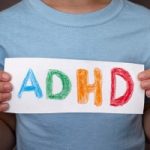This past week was National Eating Disorders Awareness Week, which entails conditions like anorexia nervosa, bulimia nervosa, and binge eating disorders. Eating disorders are not just means of controlling food, they can have serious health consequences and are often tied to a mental disorder as well.
Below are Bel Marra Health’s top news stories on eating disorders in relation to how they affect health and how to overcome them, along with some treatment strategies.
 Anorexia nervosa gut bacteria different due to eating disorder
Anorexia nervosa gut bacteria different due to eating disorder
Advertisement
Researchers have found that the gut microbiota in individuals with anorexia nervosa is different than those without the eating disorder. Anorexia nervosa is an eating disorder in which individuals refuse to maintain a healthy body weight, have an intense fear of gaining weight, and possess a distorted body image.
Mealtimes for individuals with anorexia nervosa can be quite stressful, and typically these individuals will try to avoid eating in front of others. Food and weight become an obsession for those with anorexia nervosa and it occupies their whole day. Furthermore, these individuals feel they are never skinny enough, and thus the eating disorder takes over.
Anorexia nervosa involves not eating or using laxatives or vomiting as a means to purge foods that may have been eaten.
Researchers have now found that this process drastically changes the microbiota within the gut. Continue reading…
 Type 2 diabetes risk increases with binge eating disorder, bulimia nervosa
Type 2 diabetes risk increases with binge eating disorder, bulimia nervosa
Bulimia nervosa, an eating disorder increases the risk of type 2 diabetes. Bulimia nervosa is a condition in which a person binges and purges food. This means they will consume large amounts of food only to expel it from their body immediately afterward. This can be done through vomiting or with the use of laxatives. Causes of bulimia nervosa can range from psychological, biological, social, and cultural influences.
Type 2 diabetes is a condition in which the body becomes resistant to insulin or doesn’t produce enough of it. The body’s metabolism becomes affected – this is how the body breaks down food in order to use it for energy. Causes of type 2 diabetes could be genetic, environmental, resulting from obesity or lack of physical activity.
You may be wondering what an eating disorder and type 2 diabetes have in common, well, they’re more closely related than you’d think. Research has shown a strong link between rates of type 2 diabetes and patients with bulimia nervosa.
The findings, published in the International Journal of Eating Disorders, revealed patients with bulimia nervosa have higher rates of type 2 diabetes.
The study took 2,342 patients being treated for bulimia nervosa and compared them with 9,368 controls over the course of 16 years. Incidences of type 2 diabetes were examined in three stages: before treatment of the bulimia nervosa, entering treatment for bulimia nervosa until the end of the study, and combined time before, during and after treatment. Continue reading…
 Eating disorders and depression incidence found to be higher in athletes
Eating disorders and depression incidence found to be higher in athletes
Eating disorders and depression incidence is found to be higher in athletes. On average, athletes are three times more likely to develop an eating disorder. Additionally, much evidence has supported a strong association between depression and eating disorders.
Although it may seem that being exceptionally fit and talented would ward off eating disorders and depression, it is simply not the case. Athletes are constantly put under stress to do better and be better. Oftentimes, they may feel they have let many people down when they fail. This stress can contribute to eating disorders and depression.
Additionally, body image is also a big deal for athletes, as they are supposed to look a particular way – and if they don’t, they face scrutiny. Lastly, many athletes are put on specific meal plans. Although these plans are intended to be balanced, sticking to a strict regime contributes to the aspect of control, or lack thereof, which can lead its way into developing an eating disorder, too.
Research has found that nearly 17 percent of athletes show signs of psychiatric disorders. For the study published in the Journal of Sport Sciences, researchers examined 122 British athletes who completed questionnaires assessing weight, diet history, previous eating-related diagnoses, and desired weight. Their eating attitudes, restraint, fear of losing, and weight and self-image issues were also measured. Mental state and eating habits at start point and after six months were evaluated as well. Continue reading…
 In frontotemporal dementia (FTD), abnormal eating is influenced by neural networks
In frontotemporal dementia (FTD), abnormal eating is influenced by neural networks
In frontotemporal dementia (FTD), abnormal eating is influenced by neural networks. An increase in appetite (hyperphagia) is commonly seen in frontotemporal dementia patients, and researchers have found that those disassociated neural networks are responsible for this change in eating habits.
Atrophy in the cingulate cortices, thalami, and cerebellum was observed on MRI in patients with behavioral variant frontotemporal dementia that was associated with an increase in caloric intake.
The investigators of the study wrote, “An understanding of the networks that control this eating behavior offers opportunities for targeted treatments that can modify eating behavior, metabolic abnormalities, and disease progression, and provides insights into structures that control eating behavior in healthy individuals.”
Advertisement
The study involved the recruitment of 49 patients with dementia. Their eating habits were compared with 25 controls. Groups consisted of frontotemporal dementia patients, Alzheimer’s disease patients, and semantic dementia patients.
Behavioral variant in the FTD group was more functionally impaired, compared to the Alzheimer’s disease group. This variant was also closely related to eating behavior changes. Continue reading…
 Attention deficit hyperactivity disorder (ADHD) tied to higher eating disorders risk
Attention deficit hyperactivity disorder (ADHD) tied to higher eating disorders risk
Attention deficit hyperactivity disorder (ADHD) is tied to a higher risk of eating disorders. Attention deficit hyperactivity disorder is a condition that commonly affects children and can stay with a person right into adulthood. The disorder is characterized by an inability to focus or pay attention, difficulty controlling behavior, and hyperactivity.
There are three types of ADHD: predominately hyperactive-impulsive, predominately inattentive, and combined hyperactive-impulsive and inattentive. In predominately hyperactive-impulsive, six or more of the symptoms are part of the hyperactivity-impulsive category. Predominately inattentive children have difficulty getting along with others and they may sit quietly but are not paying attention. In the latter situation, parents and teachers may overlook the child and may not realize something is wrong, because the child is behaving well, although they are not learning anything. Combined hyperactive-impulsive and inattentive is the most common type of ADHD where symptoms from the two other types are seen. Continue reading…
